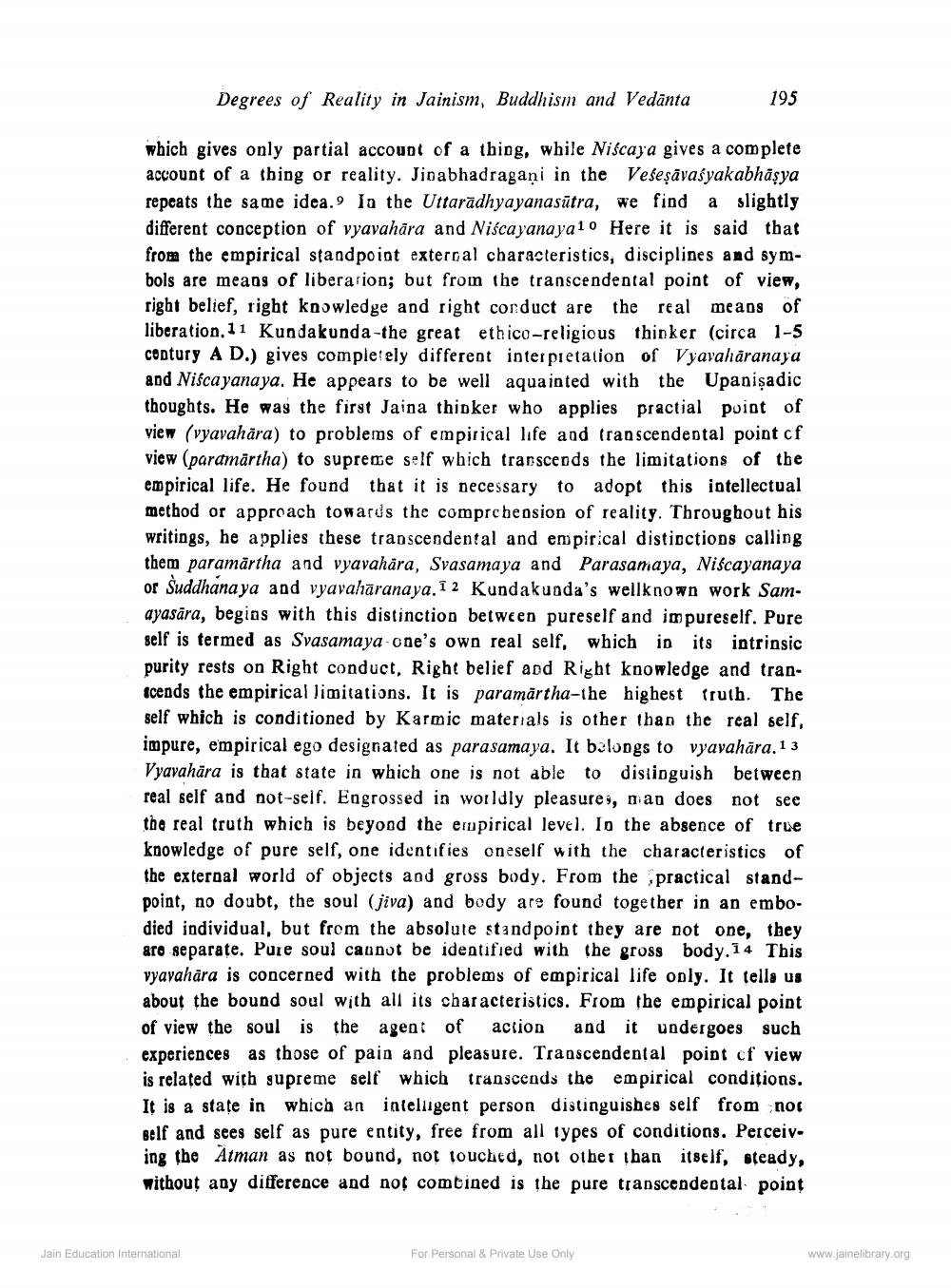________________
Degrees of Reality in Jainism, Buddhism and Vedānta
195
which gives only partial account of a thing, while Niscaya gives a complete account of a thing or reality. Jinabhadragani in the Veseşāvasyakabhāşya repeats the same idea.. la the Uttaradhyayanasūtra, we find a slightly different conception of vyavahāra and Niścayanaya10 Here it is said that from the empirical standpoint external characteristics, disciplines and symbols are means of liberarion; but from the transcendental point of view, right belief, right knowledge and right conduct are the real means of liberation. 11 Kundakunda-the great ethico-religious thinker (circa 1-5 century AD.) gives completely different interpretation of Vyavahāranaya and Niscayanaya. He appears to be well aquainted with the Upanişadic thoughts. He was the first Jaina thinker who applies practial point of view (vyavahāra) to problems of empirical life and transcendental point of view (paramārtha) to supreme self which transcends the limitations of the empirical life. He found that it is necessary to adopt this intellectual method or approach towards the comprehension of reality. Throughout his writings, he applies these transcendental and empirical distioctions calling them paramärtha and vyavahära, Svasamaya and Parasamaya, Niscayanaya or Suddhana ya and vyavahāranaya. 1 2 Kundakunda's wellknown work Samayasāra, begins with this distinction between pureself and impureself. Pure self is termed as Svasamaya one's own real self, which in its intrinsic purity rests on Right conduct, Right belief and Right knowledge and transcends the empirical limitations. It is paramartha-the highest fruth. The self which is conditioned by Karmic materials is other than the real self, impure, empirical ego designated as parasamaya. It belongs to vyavahāra, 13 Vyavahāra is that state in which one is not able to distinguish between real self and not-self. Engrossed in worldly pleasure, nan does not see the real truth which is beyond the empirical level. Io the absence of true knowledge of pure self, one identifies oneself with the characteristics of the external world of objects and gross body. From the practical standpoint, no doubt, the soul (jiva) and body are found together in an embodied individual, but from the absolute standpoint they are not one, they are separate. Pure soul caunot be identified with the gross body.14 This vyavahāra is concerned with the problems of empirical life only. It tells us about the bound soul with all its characteristics. From the empirical point of view the soul is the agent of action and it undergoes such experiences as those of pain and pleasure. Transcendental point of view is related wițh supreme self which transcends the empirical conditions. It is a state in which an intelligent person distinguishes self from not self and sees self as pure entity, free from all types of conditions. Perceiv. ing the Atman as not bound, not touched, not other than itself, steady, without any difference and not combined is the pure transcendental point
Jain Education International
For Personal & Private Use Only
www.jainelibrary.org




